Destinations > Asia > Japan > Japan
Destination:
Japan
- Overview
- Basics
- Getting Ready
- Accommodations
- Restaurants
- Trip Highlights
- Itinerary
- Explore by Area - Tokyo
- Explore by Area - Kyoto
- Trip Extensions
- Tokyo Monthly Calendar
- Contacts
Explore by Area - Tokyo
Named the capital of Japan in 1868, Tokyo is made up of several self-contained districts, each with its own personality. Tokyo has comparatively few historic buildings due to a catastrophic earthquake in 1923 and bombings during World War II. As a sprawling modern city, full of the latest in technology, pop culture and high fashion, few places rival Tokyo for energy and excitement; but traditions are alive and well in the Kabuki theater and sumo stables.
topCentral Tokyo
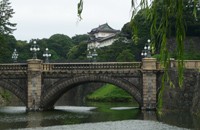
Imperial Palace
At the spiritual as well as literal heart of Tokyo, the Imperial Palace is the residence of the emperor and his family. Though the palace itself is off-limits to visitors, many of the surrounding parks and gardens are open to the public and create a welcome green space in the city center.
topGinza
Toyko's most expensive and glamorous district offers chic shopping by day and sophisticated entertainment by night. For us, the main attraction was the historic Kabuki-za Theater, Tokyo's principal theater for Kabuki. (This theater was closeed in 2010; the rebuilt theater is scheduled to open in spring 2013. In the meantime, Ginza's Shinbashi Enbujō is the chief venue for kabuki in Tokyo.)
Hakuhinkan Toy Park
8-811 Ginza, Chuo-ku on Chuo Dori
+81 (0)3 3571 8008
Daily 11am-10pm
A cross between a toy store and amusement park. Nine stories of toys and games, restaurants, and a theater.
topSuidobashi
A major business district north of the Imperial Palace, Suidobashi is best known as the home of Tokyo Dome City, a vast entertainment complex.
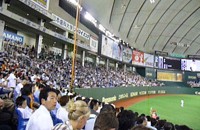
Tokyo Dome
This white-capped dome, known as the “The Big Egg,” is Tokyo’s main baseball venue, home of the Yomiuri Giants. Japanese baseball games follow essentially the same rules as their American counterparts, but watching one is quite a different experience, with entire sections chanting in unison, cheerleaders on the field between innings, and female vendors running up and down the stadium steps with mini-kegs on their backs.
Tokyo Dome City
Open daily, 10am-9pm
Spa LaQua open daily 11am-9am (22 hrs)
Just west of the Big Egg, this complex of amusement parks features roller coasters, the “Big O” (a spokeless ferris wheel), and Spa LaQua, a five-story bathing complex.
topNorthern and Eastern Tokyo
topAsakusa
Discover the last vestiges of old Tokyo in this quaint neighborhood, home to Senso-ji Temple, Tokyo's most sacred and spectacular temple. The nearby streets of Nakamise-dori and Kappabashi-dori are a souvenir-hunter's paradise.
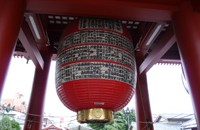
Senso-ji Temple
2-3-1 Asakusa, Taito-ku, Tokyo
+81 (0)3 3842 0181
Apr-Sept 6am-5pm daily; Oct-Mar 6:30am-5pm daily
Tokyo's most sacred Buddhist temple is impressive, but its real interest lies in watching the daily rituals of the worshipers. Asakusa Jinja, a Shinto shrine on the temple grounds, is especially worth seeing. If you're lucky, you'll be present for the most popular Shinto festival, Sanja Matsuri, which takes place over three or four days in late spring.
Nakamise-dori
Daily 9:30am-7pm
This street is a treasure trove of traditional crafts, including obi sashes, hair combs, fans, dolls and kimonos. The shops are part of a living tradition of selling to pilgrims who walked to Senso-ji Temple.
Kappabashi-dori
Mon-Sat stores close at about 5pm; Shops closed Sun
The wholesale district for kitchenwares, including the plastic replicas of food you will see in restaurants.
topRyogoku
Life in this district revolves around sumo – the National Sumo Stadium is here, surrounded by sumo stables where the wrestlers live and train.
Sumo Stables
Visiting a sumo stable and watching the athletes exercise was one of our most memorable Tokyo experiences. Out of respect, viewers must sit on a pillow (which is provided) on folded knees – the bottoms of your feet must never face the sumo. Because silence must be maintained during practice, ask your guide beforehand about life in the stable, seniority, sumo diet and lifestyle, and how the sumo competitive schedule works as a sport for life.
Dewanoumi-beya
2-3-15 Ryogoku, Sumida-ku, Tokyo 130-0026
Izutsu-beya
2-2-7 Ryogoku, Sumida-ku, Tokyo 130-0026
+81 (0)3 3634 9827
Kasugano-beya
1-7-11 Ryogoku, Sumida-ku, Tokyo 130-0026
Arashio-beya
2-47-2 Nihonbashi-Hamacho, Chuo-ku, Tokyo 103-0007
+81 (0)3 3666 7646
Musashigawa-beya
4-27-1 Higashi-Nippori, Arakawa-ku, Tokyo 116-0014
+81 (0)3 3801 6343 (Enquiries in Japanese only)

Edo Tokyo Museum
1-4-1 Yokoami, Sumida-ku, Tokyo
+81 (0)3 3626 9974
Open Tue-Sun 9:30am-5:30pm (Sat until 7:30pm). Closed Mondays.
Large, comprehensive and fascinating, this museum covers the 400-year history of “Old Tokyo” from 1590, when the city was founded by Tokugawa Ieyasu, to the period of reconstruction after WWII. Using dioramas, replicas, scale models, and interactive displays, the exhibits showcase the city’s evolving politics, economics and culture.
topBayside Tokyo
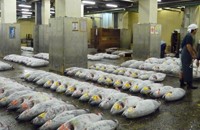
Tsukiji Fish Market
5-2-1 Tsukiji, Chuo-ku, Tokyo
+81 (0)3 3542 1111
Closed some Weds, holidays, Dec, New Year's and Aug 15-16
Every day except Sunday, 15,000 buyers and restaurateurs from all over the world buy seafood here from some 1700 stalls. Beware of pickpockets. Tourists are currently not allowed to enter the tuna auction areas.
topOdaiba Waterfront District
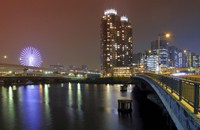
Undeveloped until recently, this area now boasts an impressive number of entertainment and shopping facilities.
DECKS Tokyo Beach
1-6-1 Daiba, Minato-ku, Tokyo
+81 (0)3 3599 6500
Generally open 11am-9pm. Hours and days vary by restaurant, shop and season.
This mall has 7 floors of shops and many restaurants. The kids' favorite stop – Sega Joypolis.
Joypolis
3F Tokyo Decks, Odaiba
+81 (0)3 5500 1801
Daily 10am-11pm
Virtual amusement arcade, outfitted with the latest in video games and high-tech virtual-reality attractions, courtesy of Sega.
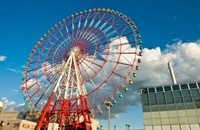
Palette Town Shopping Centre
Hours vary by attraction
Palette Town may remind you of Las Vegas – it's a multi-faceted entertainment and shopping experience. Our kids loved the Ferris Wheel and the Toyota Mega Web.
Maritime Museum
3-1 Higashii-Yashio, Shinagawa-ku, Tokyo
+81 (0)3 3570 9151
Open Tue-Sun 10am-5pm; Closed Mon and Dec 28-Jan 1
Housed in a building shaped like a cruise ship, the maritime museum features an excellent collection of model boats.
Miraikan National Museum of Emerging Science and Innovation
2-41 Aomi , Koto-ku, Tokyo
+81 (03) 3570 9151
Open Wed-Mon 10am-5pm; Closed Tue and Dec 28-Jan 1
This museum, offering hands-on explorations of the latest in science and technology, will fascinate visitors of all ages.
topSouthern and Western Tokyo
topHarajuku
Tokyo's young and innovative have gravitated here since the 1964 Olympics put its international stamp on the area.
Takeshita-dori
This narrow alley between Meiji-dori and Harajuku station is the place to find what's hot in teen fashion and culture.
Omotesando-dori
A wide, tree-lined boulevard that forms the heart of this area. Great for upscale shopping and people-watching.
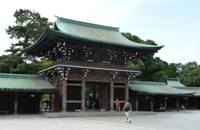
Meiji-jingu
Open daily sunrise to sunset
Built of cypress, with copper roofs, this impressive shrine was built as a memorial to Emperor Meiji and his empress, and is Tokyo’s most important Shinto shrine. A symbol of Japanese imperial power, it was rebuilt in 1958 after being destroyed in WWII. The shrine is the focus of several annual festivals, and families typically bring newborn babies here to be blessed. Approach the Inner Garden via the southern gate in order to pass under the 40-foot O-Torii, the largest Myojin-style gate in Japan.
topRoppongi
Once known mostly for its nightlife, this upscale neighborhood has become Tokyo’s arts hub, home to several major museums and galleries.

Mori Art Museum
6-10-1 Roppongi, Minato-ku, Tokyo
+81 (0)3 5777 8600
Open Wed-Mon: 10am-10pm, Tue 10am-5pm (hours may change depending on the exhibition)
Located on the top floor of the 54-story Mori Tower in Roppongi Hills, this museum exhibits diverse, top-quality contemporary art and design from Asia and around the world. The museum ticket includes admission to the Tokyo City View observation deck, the highest viewpoint in Tokyo.

Suntory Museum of Art
Tokyo Midtown Gardenside
9-7-4 Akasaka, Minato-ku, Tokyo
Open Wed-Mon 10am-6pm (Fri, Sat until 8pm). Closed Tue and during installation of new exhibitions.
Devoted to the theme of “Art in Life,” this museum hosts constantly changing exhibitions of antique Japanese arts and crafts. Along with the exquisite collections of lacquerware, ceramics, paintings and textiles, there is also a traditional tea ceremony room offering small public ceremonies every second Thursday.
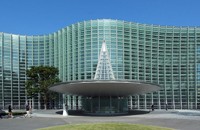
National Art Center, Tokyo
7-22-2 Roppongi Minato, Tokyo
+81 (0)3 5777 8600
Open Wed-Mon 10am-6pm (Fri until 8pm). Closed Tuesdays.
One of Japan’s largest exhibition spaces, the National Art Center hosts an eclectic variety of art exhibitions, many put on by art associations from around the country.
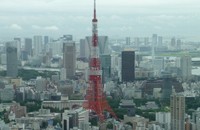
Tokyo Tower
Opened in 1958, this 1,092-foot replica of the Eiffel Tower used to offer the highest viewpoint in Tokyo. Now that the Mori Tower has topped it, the Tokyo Tower is more of a kitschy icon than a must-see attraction.
topEbisu and Daikan’yama
These two neighboring districts offer a wide range of dining, drinking and shopping options. Ebisu is home to the Yebisu Garden Place, a massive shopping and entertainment complex that also features the Tokyo Metropolitan Museum of Photography. Daikan’yama is a laid-back, village-like district filled with hip boutiques and cafes.
Tokyo Metropolitan Museum of Photography
Yebisu Garden Place, 1-13-3 Mita Meguro-ku, Tokyo
+81 (0)3 3280 0099
Open Tue-Sun 10am-6pm (to 8pm Thu & Fri). Closed Mon and Dec 29-Jan 1.
This museum showcases works of cultural and historic value from major Japanese and Western photographers, with a special focus on life in Tokyo.
topDay Trip
topNikko National Park
90 miles north of Tokyo
This magnificent park set in rugged mountain terrain features volcanoes, waterfalls, lakes, temples and shrines. The best seasons to visit are summer and fall because of the gorgeous colors of the vegetation. Weather is unpredictable in the Nikko area; check the forecast for the day of your visit. We discovered that we needed to wear warmer clothing and boots for this part of our trip.
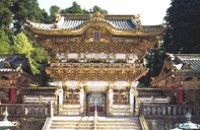
Tosho-go Shrine
2301 Sannai, Nikko City
+81 (0)288 54 0560
Open Apr-Oct 8am-5pm daily; Nov-Mar 8am-4pm
Now a UNESCO World Heritage Site, this mausoleum complex was built to dazzle, and it more than succeeds. Lavish embellishments cover nearly every surface here, but the highlight is the Yomei-mon Gate, decorated with brilliant colors and over 500 sculptures. It's also known as "Higurashi-mon" (sunset gate) because people spend all day gazing at its beauty.
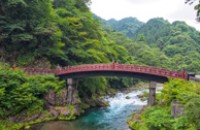
Futara-san Shrine
2307 Sannai, Nikko City
+81 (0)288 54 0535
Open Apr-Oct 8am-5pm daily; Nov-Mar 8am-4pm daily
This shrine, located on the top of Nantai-san, is made up of 23 structures. The temples were originally founded in 782 by Buddhist Monk Shodo Shonin, who introduced Buddhism to Nikko. The present shrine was built in 1619 by the second shogun of the Tokugawa shogunate.
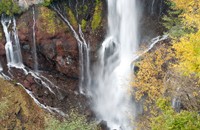
Kegon Waterfall
Open 8am-5pm (varies in some seasons)
Kegon Waterfall elevator: +81 (0)288 55 0030
A drive to this spectacular waterfalls and a hike to the shores of Lake Chuzengi is its own reward.
Copyright 2013 MyLittleSwans, LLC. All rights reserved. My Little Swans, the logo and Share a world of experience are registered Trademarks of MyLittleSwans, LLC. Use of this site constitutes acceptance of our Terms of Use and Privacy Policy.
















